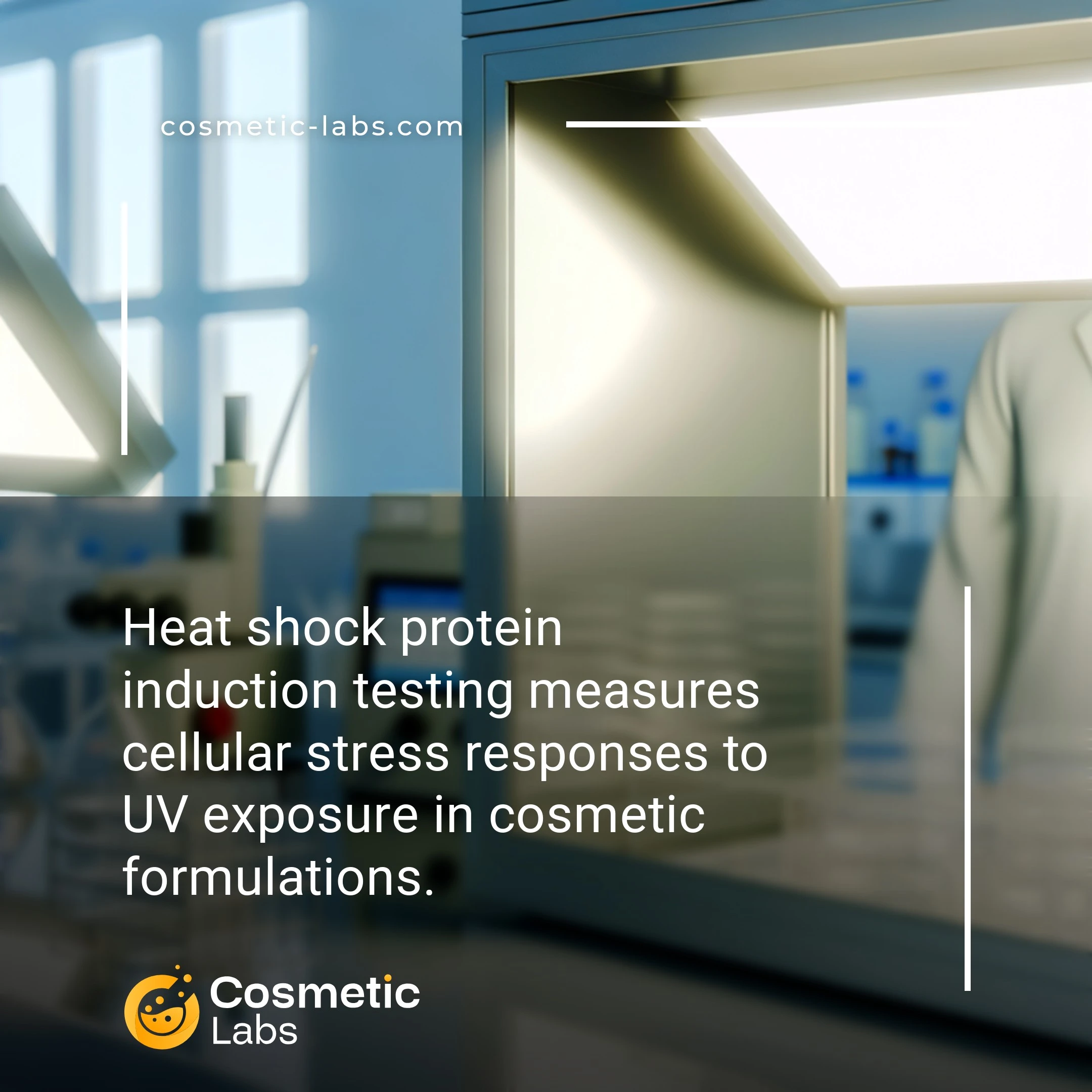Heat Shock Protein Testing for Sun Protection Products

What is Heat shock proteins induction?
Heat shock protein induction testing for sun protection measures how UV exposure triggers cellular stress response proteins in skin models, providing brands with molecular-level evidence of photoprotective efficacy. Labs use keratinocyte cultures exposed to controlled UV doses to quantify HSP70 and HSP27 expression levels, offering deeper insights than traditional SPF testing alone. This biomarker approach helps validate sunscreen formulations by demonstrating actual cellular protection mechanisms rather than just surface UV absorption.
Why do you need this service?
Cosmetic labs use heat shock protein induction assays to validate sunscreen formulations by measuring cellular stress responses in keratinocytes exposed to UV radiation. Brands leverage these biomarker tests to demonstrate their products’ protective mechanisms beyond standard SPF measurements, providing molecular-level evidence for marketing claims about skin defense and recovery processes.
Who provides Heat shock proteins induction services?
All cosmetic labs providing Heat shock proteins induction services
There is no company providing these services at the moment.
Heat Shock Protein Induction Testing for Sun Protection Products
Heat shock protein (HSP) induction testing measures how well your sun protection formulations trigger cellular defense mechanisms against UV damage. This advanced biomarker analysis goes beyond traditional SPF testing to evaluate your product’s ability to activate natural protective responses in skin cells.
Cellular Protection Mechanism Analysis
Labs use specialized cell culture models to measure HSP70 and HSP27 expression levels after UV exposure with your formulation. The testing protocol involves treating keratinocytes with your product, exposing them to controlled UV radiation, then analyzing protein expression through Western blot or immunofluorescence techniques.
Key testing parameters include:
- HSP70 upregulation levels (typically 2-5x baseline)
- HSP27 phosphorylation status
- Time-course expression patterns (2-24 hours post-exposure)
- Dose-response relationships for active ingredients
Product Development Applications
This testing helps you validate claims about cellular protection and anti-aging benefits beyond UV filtering. Results support marketing messages about DNA repair support, oxidative stress reduction, and long-term skin health maintenance.
The data proves particularly valuable for:
- Premium sunscreen formulations with antioxidant complexes
- After-sun products claiming repair benefits
- Daily moisturizers with SPF and anti-aging properties
Connect with specialized cosmetic labs on our platform to discuss HSP induction testing protocols that align with your product positioning and regulatory requirements.
Practical Applications of Heat Shock Protein Induction Testing for Sun Protection
Cosmetic labs measure heat shock protein induction for sun protection testing to validate how UV filters and antioxidants protect skin cells from photodamage at the molecular level.
Sunscreen Formula Validation
Labs expose cultured skin cells to controlled UV radiation doses while measuring HSP70 and HSP27 expression levels. This cellular stress response indicates how well your sunscreen formulation prevents DNA damage and protein denaturation. Testing protocols typically run 24-48 hours with qPCR analysis to quantify protein upregulation.
Results show whether your SPF claims match actual cellular protection. Labs can test different UV filter combinations, concentrations, and photostabilizers to optimize your formula’s cytoprotective performance before expensive clinical trials.
| HSP Response Level | Protection Indicator | Formula Adjustment |
|---|---|---|
| Low induction (<2x baseline) | Effective protection | Formula ready for testing |
| Moderate induction (2-4x baseline) | Partial protection | Increase UV filter concentration |
| High induction (>4x baseline) | Insufficient protection | Reformulate with different filters |
Antioxidant System Efficacy
Testing services evaluate how botanical extracts, vitamins, and synthetic antioxidants reduce heat shock protein activation under UV stress. Labs measure HSP expression alongside oxidative stress markers like ROS production and lipid peroxidation. This data proves your antioxidant system’s photoprotective mechanisms beyond traditional SPF measurements.
You’ll receive quantitative data showing which antioxidant combinations work synergistically with your UV filters. Labs can test ingredient stability, optimal pH ranges, and concentration thresholds to maximize cellular protection while maintaining product aesthetics.
Connect with specialized cosmetic labs on our platform to access heat shock protein testing services for your sun protection formulations.
